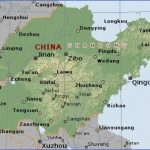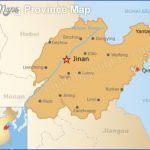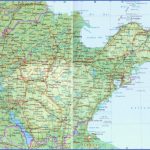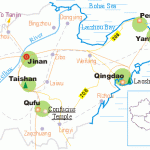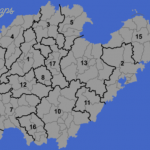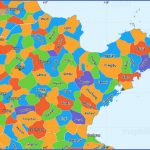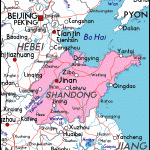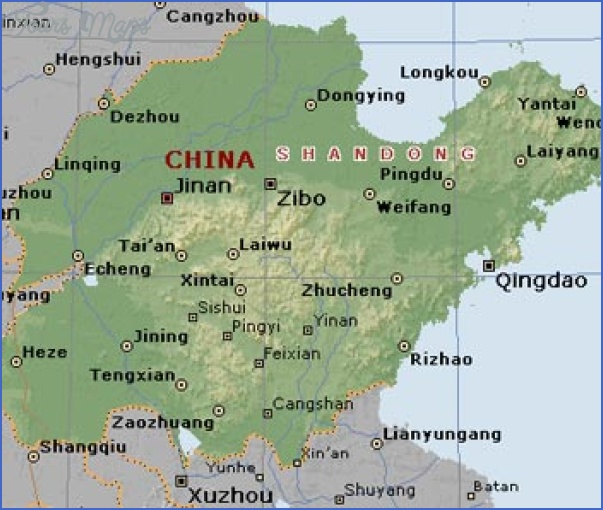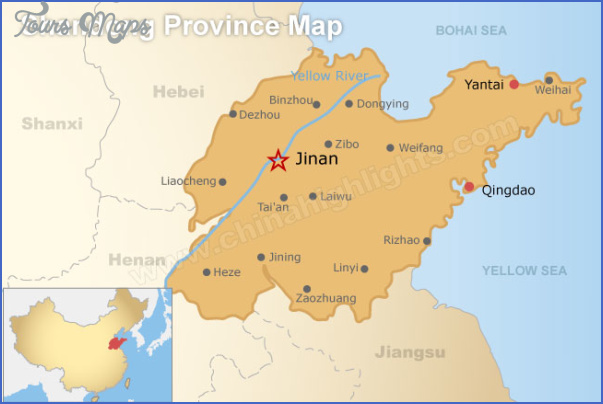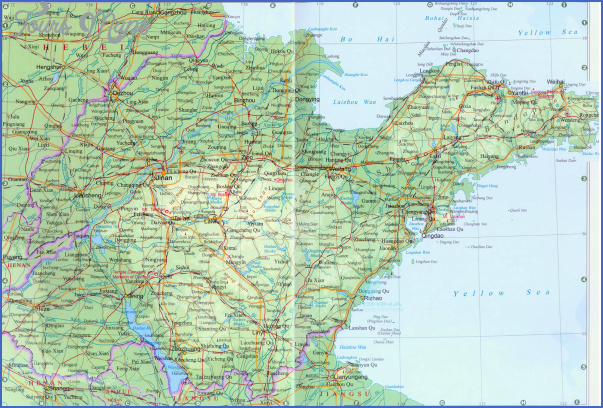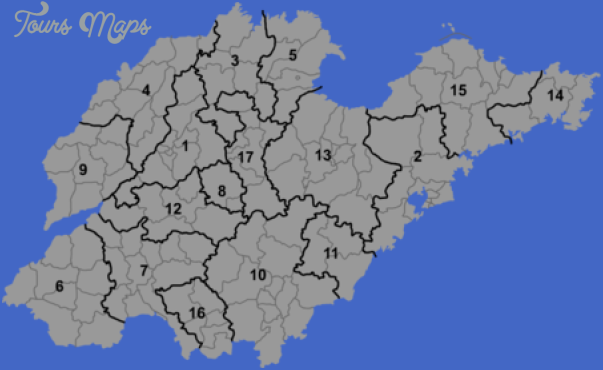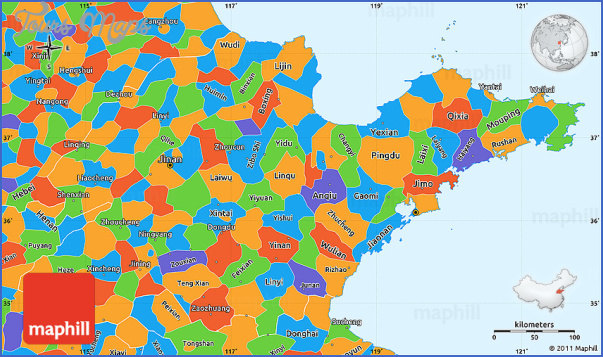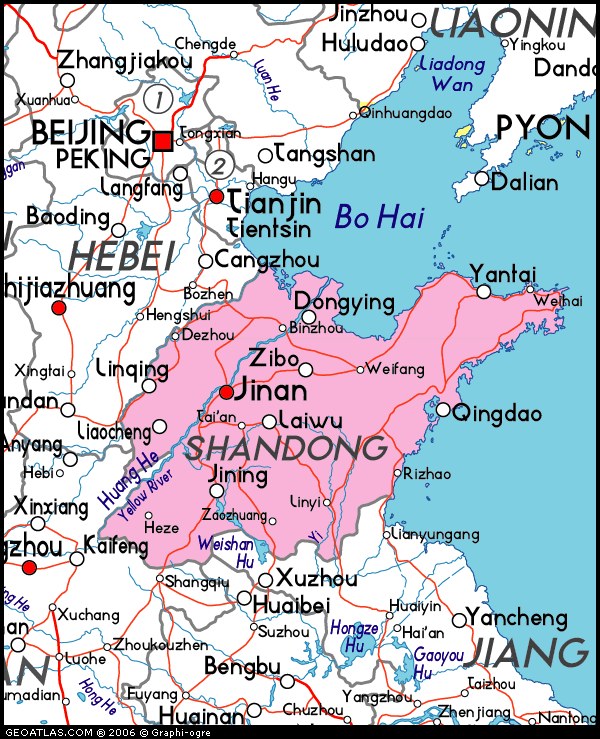Province
Area: 153,300sq.km/59,173sq. miles Population: 85,700,000. Capital: Jinan
The densely populated province of Shandong lies between 114°36- Situation
122°43’E and 34°25′-38°23’N on the Bohai and the Huanghai seas.
The territory consists of 55% flat land, 35% hills and mountains, 9% Topography swamp, and 1% lakes and rivers. In the east lies the peninsula of Shandong Bandao with its many bays, separating Huanghai Bay from the Yellow Sea.
The province is predominantly hilly, with some higher areas (Laoshan up to 1087m/3566ft). The western area joins the alluvial plains of the lower Huangha. In the central part of the province rise the Shandong mountains which consist of several ranges, with the Taishan at 1525m/5003ft.
The climate is of the continental type, with hot dry summers and cold Climate winters. The peninsula of Shandong, however, enjoys a mild climate.
The Longshan culture came into being in this area in the 3rd c. b.c. Since History the 4th c. Shandong has been an important centre of maritime trade. The 19th c. brought catastrophic flooding. The Huanghe shifted its bed in the middle of this century but was brought under control by extensive dyke construction. At the end of the 19th c. the area came under German influence and in the 20th c. was at times occupied by the Japanese. Since 1940 Shandong has developed, particularly in the industrial sphere. Favourable natural resources and rich minerals have led to the de- Trade and velopment of extensive agriculture and industry here – particularly since Industry the constant high water-level ofthe Huanghe was brought under control by dams and regulation. Wheat and maize, millet, groundnuts, sweet potatoes, tobacco, cotton and fruit are grown. Also playing an important role are silkworm cultivation, livestock rearing and freshwater and sea fishing.
Mining of coal, oil, iron-ore, bauxite and graphite is of great importance. Apart from the dominant food and textile industry (cotton production), there has developed since the early 1960s an iron and steel industry supplying tool-making machines, vehicle, locomotive and waggon construction, as well as oil production and chemical plants. Tsingtau and Yantai are important sea ports.
Shandong can boast many old towns and places of tourist interest including: the seat of the government, Jinan (see entry) called the city of springs; Tsingtau, which is well-known not only for its beer and mineral water (see entry); Yantai (see Qufu) the birthplace of Confucius; Tai’an (see entry) with the nearby Taishan Mountain, and finally Weifang (see entry) where paper dragons are made.
Shandong Map Photo Gallery
Maybe You Like Them Too
- The Best Cities To Visit in The World
- World’s 10 Best Places To Visit
- Coolest Countries in the World to Visit
- Travel to Santorini, Greece
- Map of Barbados – Holiday in Barbados

